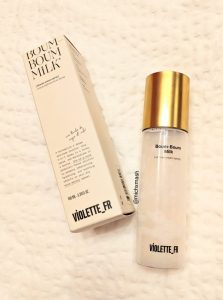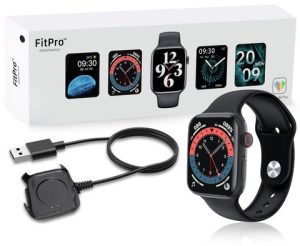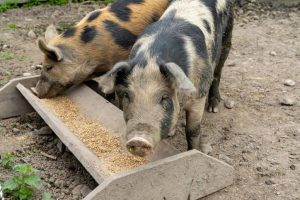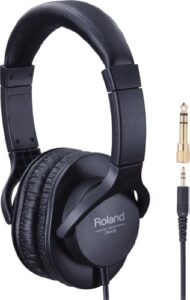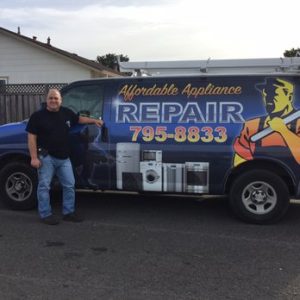Contents
Yes, dog paw pads can grow back if they are not severely damaged. When a dog injures or wears down its paw pads, the outer layer can peel away, but new tissue will gradually grow to replace it.
The speed of growth depends on various factors such as the dog’s age, health, and the severity of the damage. Proper care and protection can help facilitate the healing process and ensure the paw pads regrow properly. Regularly cleaning and moisturizing the paw pads, keeping the dog’s nails trimmed, and avoiding rough surfaces can all contribute to maintaining healthy paw pads.
Additionally, providing a comfortable resting area and monitoring for any signs of infection or prolonged healing can support the regeneration of dog paw pads.
Understanding Dog Paw Pad Regeneration And Resilience
Dog paw pads have remarkable regenerative abilities, enabling them to heal and grow back after injury. The resilience of these pads allows dogs to continue their adventures without hindrance.
Can a dog’s paw pad grow back after it gets injured? This is a common question among pet owners who are concerned about their furry friend’s well-being. Understanding the regenerative capabilities of dog paw pads is essential in caring for your dog’s feet.
In this section, we will explore how paw pads function as a protective barrier, the incredible ability of paw pads to heal, and the factors that can affect paw pad regrowth.
How Paw Pads Function As A Protective Barrier:
- Paw pads serve as a cushion and shock absorber, allowing dogs to walk, run, and explore comfortably.
- They provide insulation, protecting dogs from extreme temperatures, hot or cold.
- Paw pads enable dogs to have better traction and stability on different surfaces.
- The thick and tough skin on paw pads acts as a barrier against sharp objects, rough terrains, and harsh elements.
- Paw pads contain sweat glands that help regulate body temperature.
The Incredible Ability Of Paw Pads To Heal:
- Paw pads are naturally equipped with regenerative properties, allowing them to heal efficiently.
- Minor injuries, such as cuts, scratches, or burns on the paw pad, can often heal on their own.
- The healing process involves the formation of new tissue and the gradual closing of the wound.
- Paw pads have a robust blood supply, which enhances healing by delivering essential nutrients and oxygen to the injured area.
- Dogs may instinctively lick their injured paw pads, which can aid in the healing process due to the presence of growth factors in saliva.
Examining The Factors Affecting Paw Pad Regrowth:
- The severity of the injury plays a significant role in paw pad regrowth. Deep wounds or injuries that involve multiple layers of tissue may result in scar tissue formation instead of complete regrowth.
- Proper wound care, such as cleaning the wound, applying an antiseptic, and keeping it protected, can promote better regrowth.
- Age can affect paw pad regrowth. Younger dogs tend to have better regenerative abilities compared to older dogs.
- Health conditions, such as autoimmune disorders or diseases that affect circulation, may hinder the regrowth process.
- Nutritional deficiencies can impact a dog’s ability to regenerate tissues effectively. A balanced diet with essential nutrients promotes overall paw pad health.
Remember, while paw pads have remarkable regenerative capabilities, it’s crucial to monitor your dog’s paw health closely. If you notice any signs of infection, slow healing, or persistent lameness, consult your veterinarian for proper diagnosis and treatment.
Taking good care of your dog’s paw pads ensures their overall well-being and enables them to continue enjoying their daily adventures.

Credit: living.greatpetcare.com
The Process Of Paw Pad Healing And Regeneration
Dog paw pads have an incredible ability to heal and regenerate themselves. The question of whether dog paw pads will grow back depends on the severity of the injury.
Dogs are known for their active and playful nature, often leading them to encounter various injuries. One common concern among dog owners is whether a dog’s paw pad will grow back if it gets injured. Paw pad wounds can occur due to numerous reasons, such as stepping on sharp objects or walking on hot surfaces.
In this section, we will explore the process of paw pad healing and regeneration, factors that influence paw pad recovery, and the role of proper wound care in regrowth.
Exploring The Stages Of Paw Pad Wound Healing:
- Inflammation: When a paw pad gets injured, the body’s natural defense mechanism triggers an inflammatory response. Blood vessels dilate, allowing nutrients and immune cells to reach the injured area. This stage is essential for initiating the healing process.
- Granulation: During this stage, specialized cells called fibroblasts produce collagen, a protein that helps in the formation of new tissue. Granulation tissue starts to form, providing a foundation for the regeneration of the paw pad.
- Epithelialization: In this stage, the granulation tissue becomes covered by a layer of epithelial cells that facilitate the regeneration of the paw pad. These cells gradually migrate and multiply to form a protective barrier over the wound.
- Maturation: As the paw pad continues to heal, the newly formed tissue gains strength and flexibility. Collagen fibers align in an organized manner, improving the structural integrity of the regenerated paw pad.
Factors That Influence Paw Pad Recovery:
- Size and depth of the wound: The severity of the paw pad injury plays a significant role in the recovery process. Deeper and larger wounds may take longer to heal and regenerate.
- Overall health and age of the dog: A dog’s general health and age can affect the healing process. Younger and healthier dogs usually have a higher healing capacity compared to older or medically compromised dogs.
- Proper nutrition: Providing a balanced diet with essential nutrients, including proteins, vitamins, and minerals, is crucial for optimal wound healing. Adequate nutrition supports the regeneration of tissues.
- Rest and activity modification: Allowing the dog’s injured paw pad to rest and avoiding activities that could further irritate or re-injure the area is essential for a swift recovery.
The Role Of Proper Wound Care In Regrowth:
- Cleaning: Keeping the wound clean by gently washing it with mild soap and water helps prevent bacterial infections, allowing the paw pad to heal properly.
- Protection: Protecting the injured paw pad from further damage is necessary for successful regeneration. Using protective boots or bandages can provide a barrier and reduce the risk of re-injury.
- Moisturization: Applying a suitable paw balm or moisturizer can help keep the paw pad soft and supple, promoting faster healing and regeneration.
- Veterinary guidance: Seeking professional advice from a veterinarian is crucial for the appropriate management of paw pad injuries. They can provide guidance on wound care, recommend specific products, and monitor the healing progress.
Understanding the process of paw pad healing and regeneration, as well as the factors influencing recovery, can assist dog owners in providing the best possible care for their pets. By prioritizing proper wound care and attending to their dog’s needs, owners can help facilitate the regrowth of their furry friend’s paw pads.
Common Paw Pad Injuries And Their Recovery
Dog paw pad injuries are common, but will they grow back? Find out the truth about paw pad recovery and how to help your furry friend heal.
Did you know that your furry friend’s paw pads are incredibly important for their overall health and well-being? They provide insulation, protection, and traction, allowing them to walk, run, and play without any issues. However, just like human skin, dog paw pads can be susceptible to injuries.
In this section, we will explore some common paw pad injuries and their road to recovery.
Cracked, Split, Or Torn Paw Pads: Can They Regrow?
When it comes to cracked, split, or torn paw pads, many dog owners wonder if they will ever fully heal or if the paw pad will regrow. Lucky for your four-legged companion, paw pads have an amazing ability to regenerate and heal.
Here are some key points to keep in mind:
- Cracked, split, or torn paw pads can heal naturally with proper care and rest.
- Keeping the affected area clean and free from dirt and debris is crucial to prevent infection.
- Using pet-friendly antibacterial sprays or wipes can help to keep the wound clean and promote healing.
- Applying a dog-specific paw pad balm can provide moisture and nourishment, facilitating the healing process.
- It is essential to limit your dog’s physical activity during the recovery period to avoid further damage or reopening of the wound.
- If the injury appears severe or doesn’t show signs of improvement within a few days, consulting your veterinarian is highly recommended.
Dealing With Burns And Blisters On Paw Pads
Burns and blisters on paw pads can occur due to various reasons, such as walking on hot pavement, coming into contact with chemicals, or exposure to extreme temperatures. Here’s what you need to know about their treatment and recovery:
- First and foremost, when dealing with burns or blisters on paw pads, it’s crucial to act quickly to minimize the damage.
- Immediately remove your dog from the hot surface or eliminate any potential sources of heat or chemicals.
- Gently clean the affected paw pad with mild soap and lukewarm water to prevent infection.
- Applying a veterinarian-recommended burn or wound ointment can aid in the healing process.
- Consider using dog booties or protective creams to prevent further damage while your pup’s paw pads are healing.
- Always keep an eye out for signs of infection, such as excessive redness, swelling, or discharge. If you notice these symptoms, seek veterinary attention promptly.
Understanding Scratches And Cuts On Paw Pads
Scratches and cuts on paw pads can occur when your dog walks or runs on rough surfaces or encounters sharp objects. While these injuries can be painful, most of them will heal on their own with proper care. Take note of the following guidelines:
- Clean the affected paw pad gently with mild soap and water to remove any debris or dirt.
- Trim the hair around the wound carefully to prevent bacterial growth and aid in cleaning.
- Apply an over-the-counter antibacterial ointment to prevent infection and promote healing.
- To protect the injured paw pad, consider using a dog-specific bootie or wrapping it with a clean cloth.
- Monitor the wound closely and watch for any signs of infection, such as increased redness, swelling, or pus. If you notice these signs, consult your veterinarian for further assessment and treatment.
Remember, while minor paw pad injuries can often be treated at home, more severe or persistent injuries require professional attention. If you’re unsure about the severity of the injury or if your dog is showing signs of extreme discomfort, it’s always best to reach out to your veterinarian for guidance and support.
Your furry friend’s well-being is worth every effort!
Promoting Paw Pad Regeneration And Preventing Further Damage
Dog paw pads have regenerative capabilities, allowing them to grow back if damaged. This article explores methods for promoting paw pad regeneration and preventing further harm to your furry friend’s paws.
The healing and regeneration of dog paw pads is a topic of great concern for pet owners. Watching your furry friend deal with paw pad injuries can be distressing, but the good news is that in most cases, paw pads do grow back.
In this section, we will explore steps to aid in paw pad healing and regrowth, as well as tips for preventing paw pad injuries and damage. Let’s dive right in!
Steps To Aid In Paw Pad Healing And Regrowth:
- Keep the paw pad clean and dry: Gently clean the injured paw pad with mild antiseptic soap and warm water. Avoid using harsh chemicals that can irritate the wound. Keep the area dry to prevent infection and encourage quicker healing.
- Apply paw pad ointments or balms: Look for veterinarian-approved ointments or balms specifically designed to promote healing and provide relief to your dog’s paw pads. These products often contain natural ingredients like aloe vera, vitamin E, and shea butter, which help soothe the injured tissue and support regeneration.
- Use paw bandages or protective boots: If the paw pad injury is severe, consider using a bandage or protective boot to cover the area. This can help prevent further damage and provide an extra layer of protection during the healing process. Ensure the bandage or boot is properly fitted and doesn’t restrict blood circulation.
- Manage your dog’s activity levels: Restrict your dog’s physical activity to avoid additional stress on the injured paw pad. Engage in low-impact exercises that don’t put too much strain on the paws while they heal. Consult with your veterinarian for guidance on appropriate activity levels during the recovery period.
Providing A Suitable Environment For Paw Pad Recovery:
- Create a comfortable resting area: Set up a cozy and quiet space where your dog can rest and recover. Provide a soft bed or blanket to cushion their paws, as hard surfaces can exacerbate paw pad injuries and delay healing.
- Avoid rough or abrasive surfaces: Limit your dog’s access to rough terrains, hot concrete, or sharp objects that could further damage their paw pads. Opt for grassy or padded areas for walking and playtime until the paw pads have fully healed.
- Maintain a clean living environment: Regularly sweep or vacuum your home to remove any debris or small objects that can cause injury to your dog’s paw pads. Keep floors clean and free from chemicals that may be toxic to your pet.
Tips For Preventing Paw Pad Injuries And Damage:
- Regularly inspect your dog’s paws: Routinely check your dog’s paw pads for any signs of redness, swelling, or cuts. Detecting issues early can help prevent minor injuries from escalating into more severe problems.
- Keep nails trimmed: Overgrown nails can put extra pressure on the paw pads, leading to discomfort and potential injury. Regular nail trims help maintain proper paw structure and reduce the risk of paw pad damage.
- Moisturize the paw pads: Just like our skin, dog paw pads can benefit from regular moisturization. Use a pet-friendly paw balm or moisturizer to keep the pads supple and less prone to cracking or drying out.
- Use protective pads or boots in extreme weather conditions: When temperatures are extreme, whether hot or cold, protect your dog’s paw pads with boots or specially designed protective pads. This helps prevent burns from scorching surfaces or frostbite during icy conditions.
By following these steps to aid in paw pad healing and regrowth, as well as implementing preventative measures, you can provide your canine companion with the best possible care for their paw pads. Remember, if you have any concerns or if the injury worsens or doesn’t improve, consult your veterinarian for professional advice.
Frequently Asked Questions Of Does Dog Paw Pad Grow Back
How Long Does It Take For A Dog’S Foot Pad To Grow Back?
A dog’s foot pad typically takes about two to three weeks to regrow completely.
What Do I Do If My Dogs Paw Pad Comes Off?
If your dog’s paw pad comes off, it is important to take immediate action. Start by cleaning the area gently and thoroughly. Apply an antiseptic solution to prevent infection. Next, protect the exposed pad by covering it with a clean and non-stick bandage or a dog boot.
Keep the bandage or boot on until you can visit a veterinarian. Avoid letting your dog walk on hard surfaces or engage in strenuous activity that could further damage the paw. Monitor their behavior and look out for signs of pain or discomfort.
Watch for any excessive bleeding or signs of infection, such as pus or foul odor. It is crucial to seek professional help from a vet as soon as possible for proper assessment and treatment. Your vet may recommend medications or further medical intervention to aid in the healing process.
Will A Dog’S Paw Pad Heal On Its Own?
Yes, a dog’s paw pad can heal on its own. The healing process depends on the severity of the injury.
What If My Dog’S Pad Is Ripped But Not Bleeding?
If your dog’s pad is ripped but not bleeding, it is still important to take action. Clean the area gently with mild soap and water to prevent infection. You can apply an antiseptic ointment and cover the pad with a clean bandage or gauze wrap to protect it.
However, it is best to consult a veterinarian for proper treatment and advice. They can assess the severity of the injury and provide appropriate recommendations. It’s important to monitor your dog’s behavior and limit their activity to prevent further damage.
Regularly check the pad for any signs of infection, such as redness, swelling, or discharge. Although minor pad injuries can heal on their own, ensure proper care to promote healing and prevent any complications.
Conclusion
It is important to understand that dogs’ paw pads are resilient and have the ability to regenerate. If your dog’s paw pad gets injured or worn down, it will typically grow back over time. However, the healing process may vary depending on the severity of the injury and the care provided.
In most cases, providing a clean and safe environment for your dog’s paws, using protective booties or paw balms, and monitoring for any sign of infection can help speed up the healing process. It is also crucial to consult with a veterinarian for proper guidance and treatment.
Remember, prevention is key in protecting your furry friend’s paw pads. Regularly inspect their paws, keep nails trimmed, and be mindful of hot surfaces or harsh chemicals. By taking proper care, you can help ensure that your dog’s paw pads stay healthy and strong.



